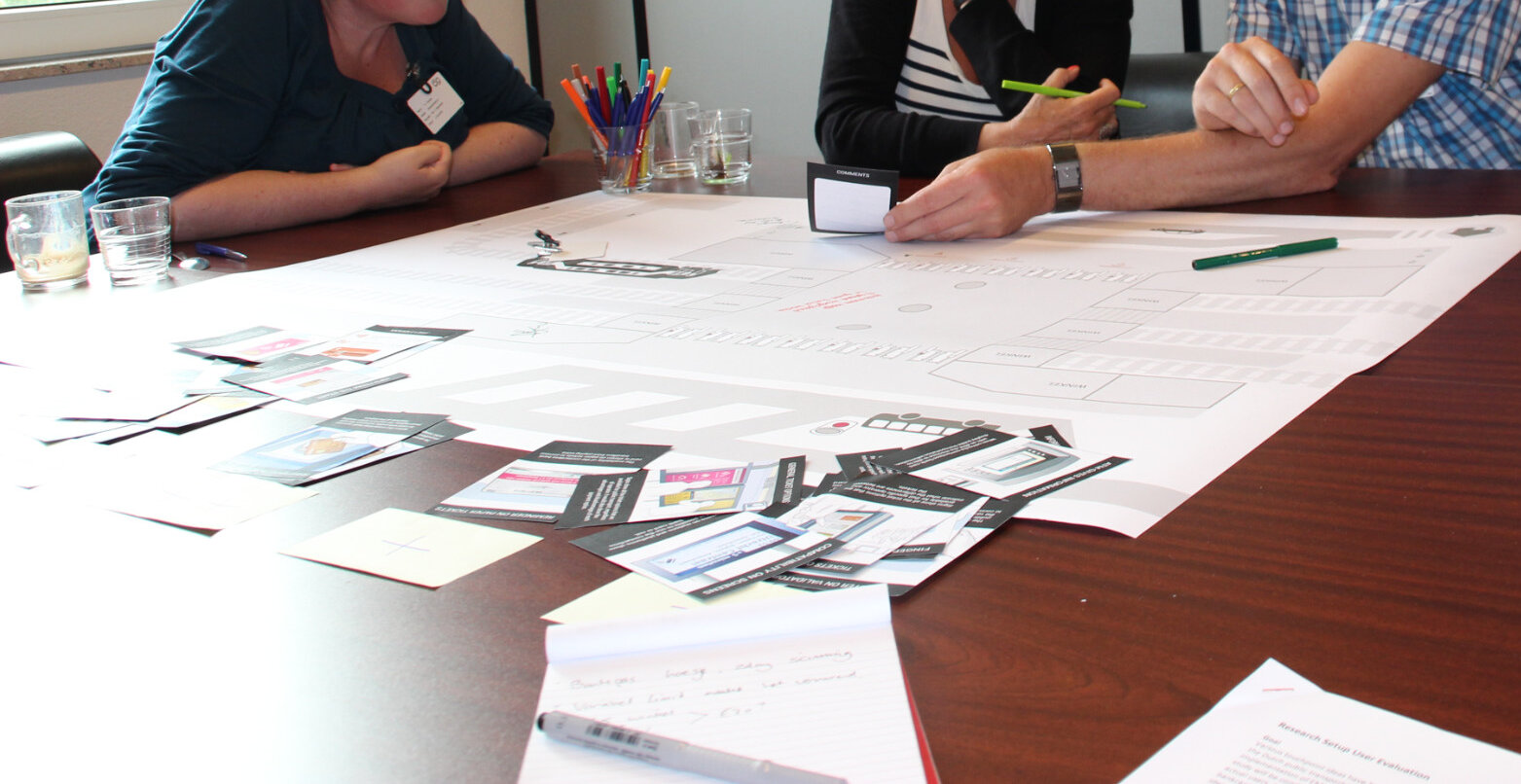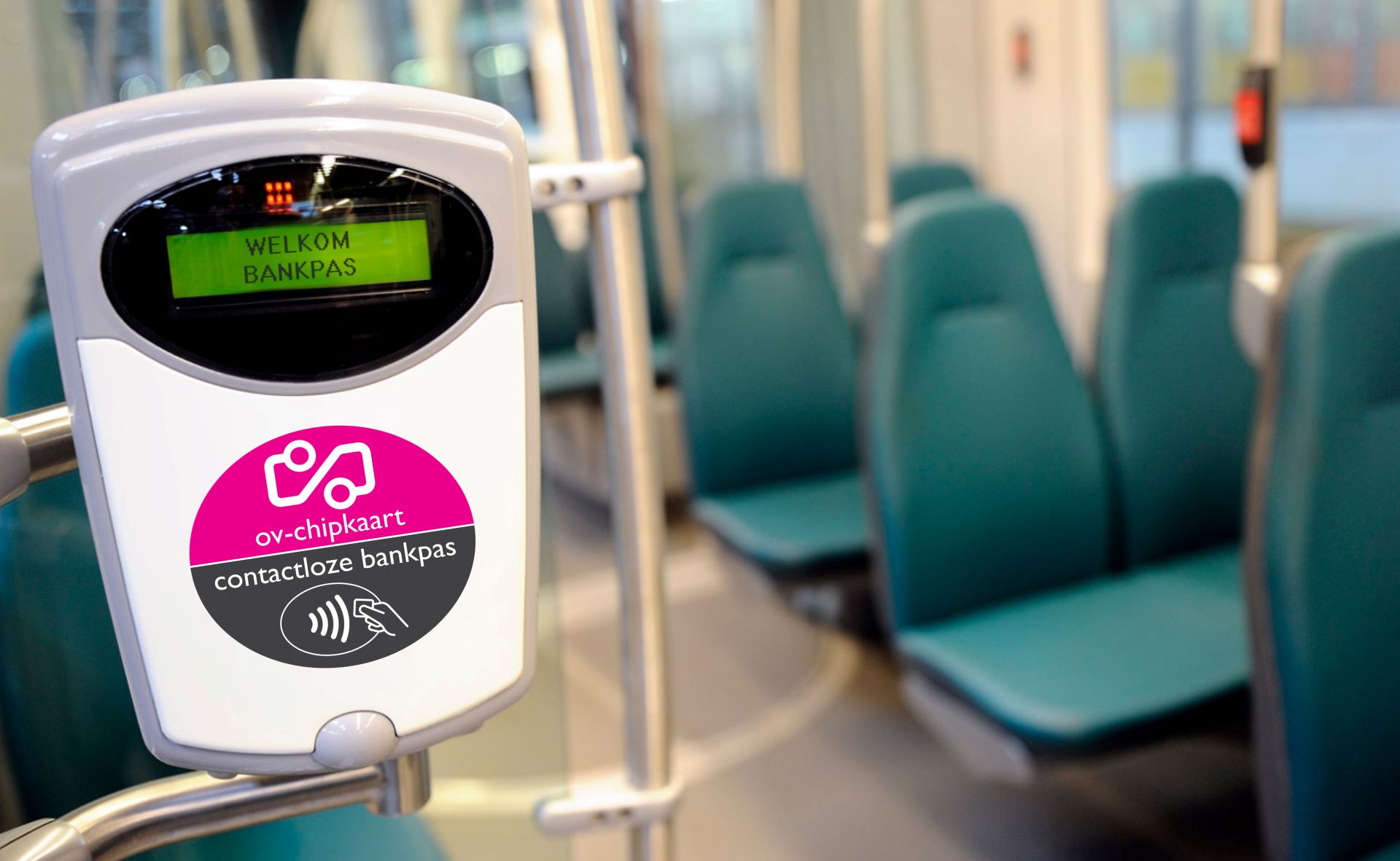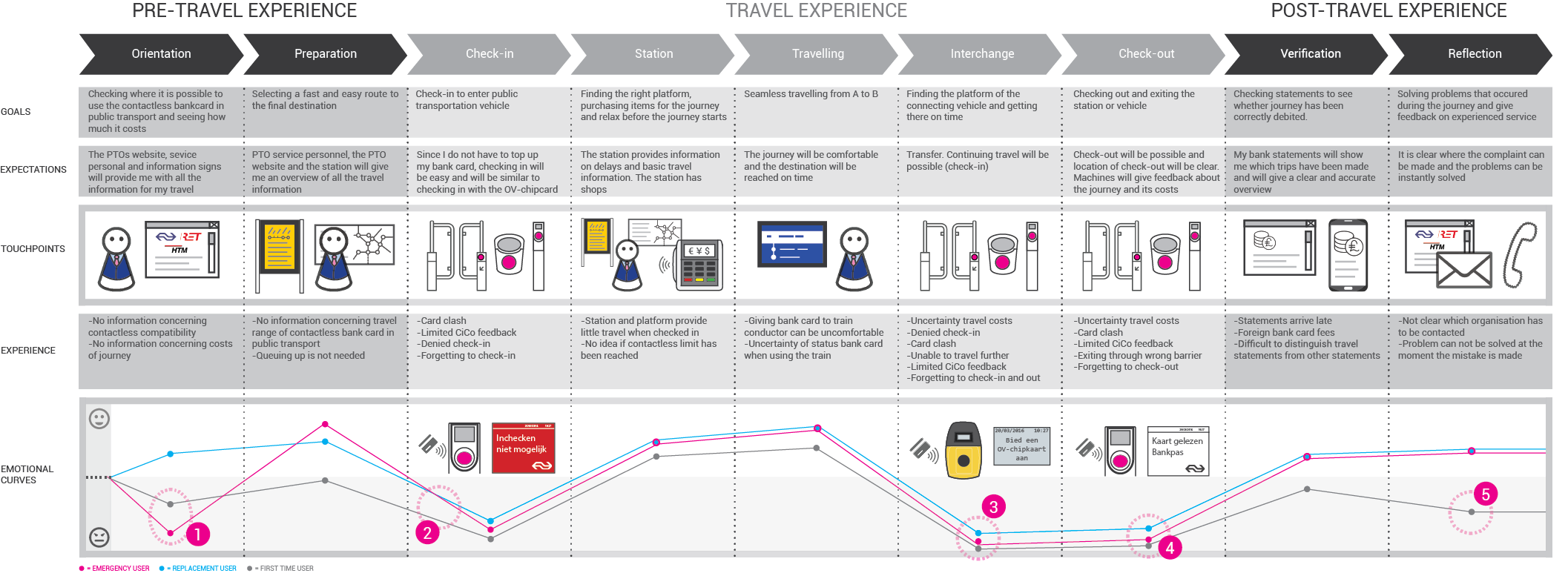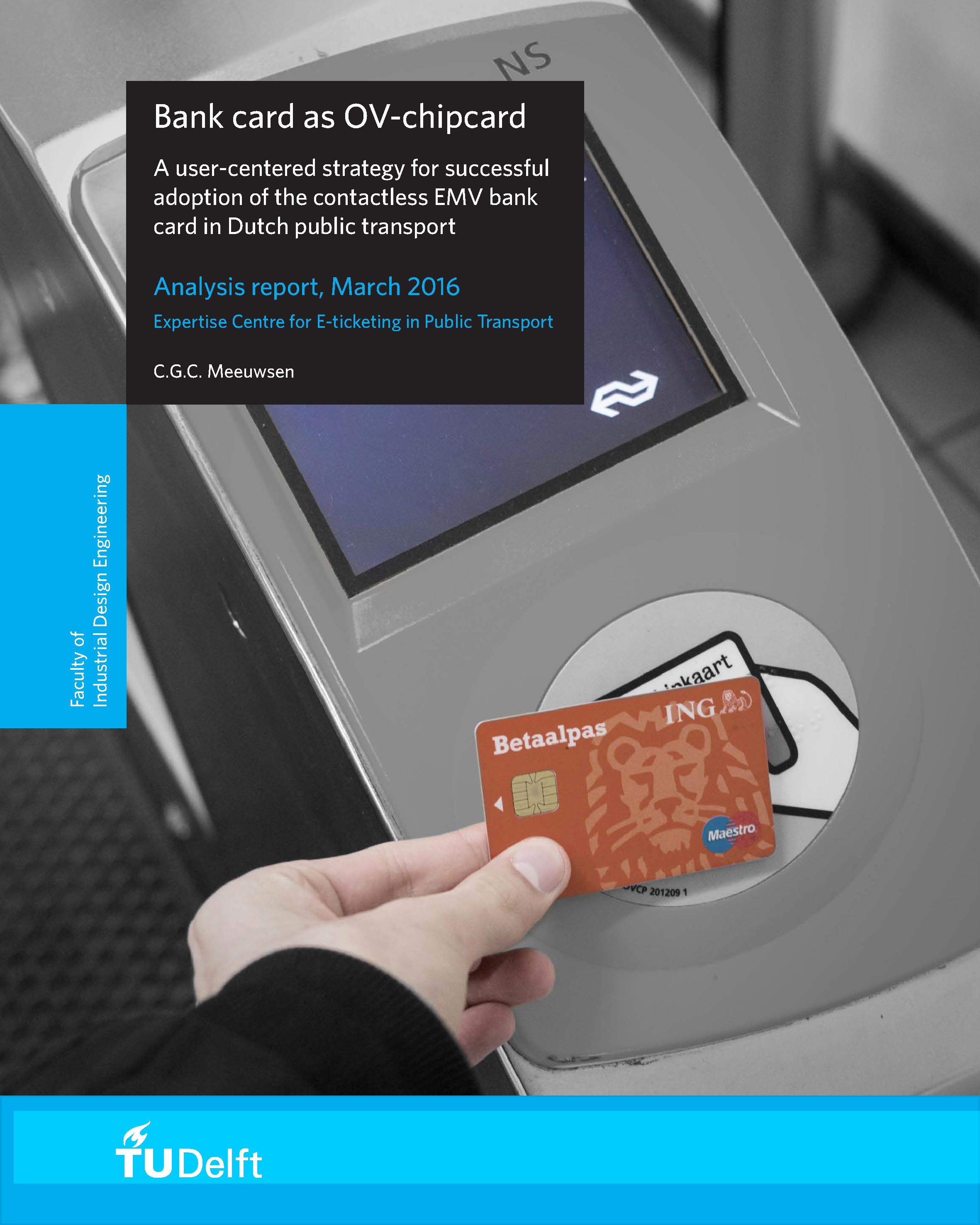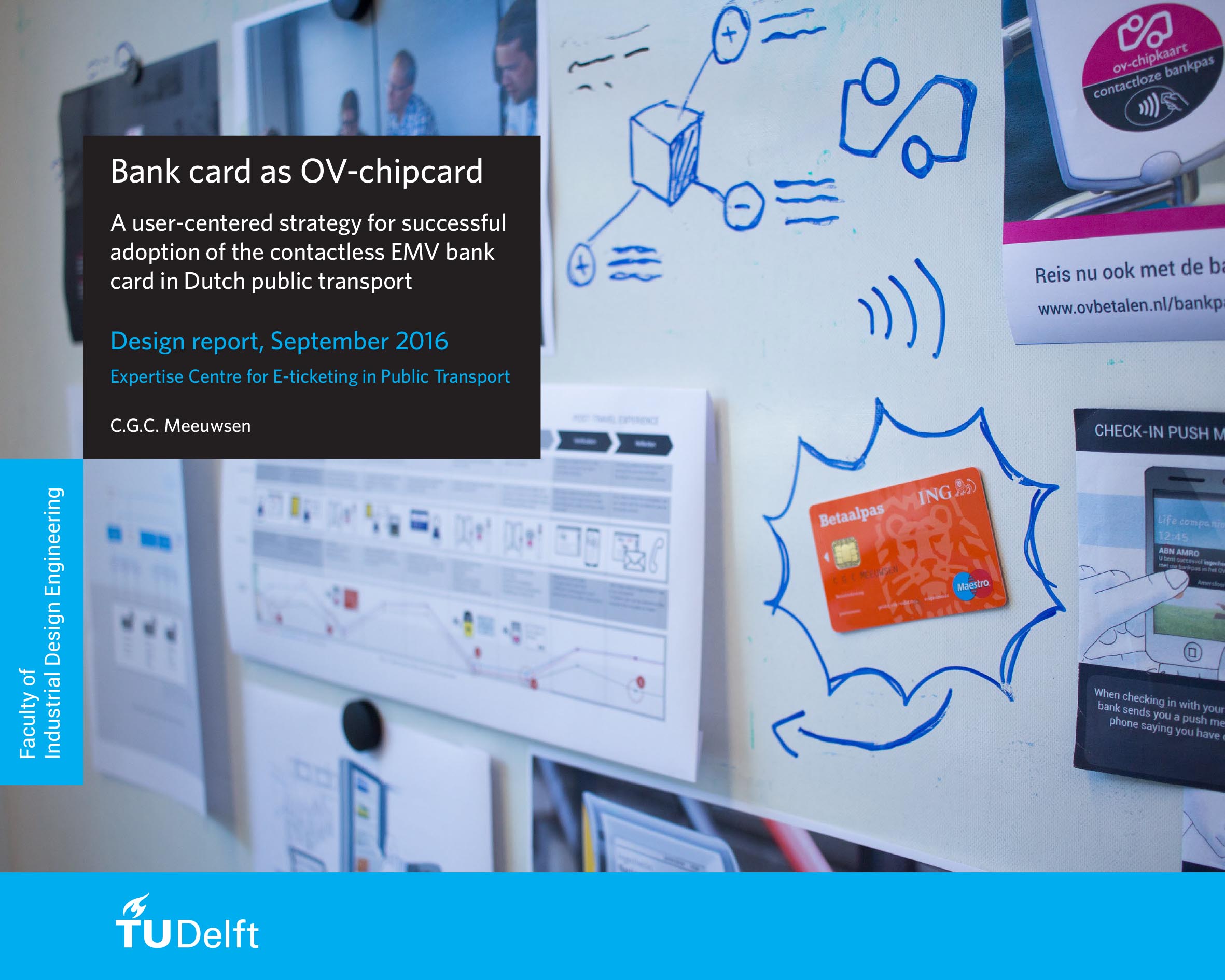Bank card as OV-chipcard
Bank card as OV-chipcard
Problem statement
The OV-chipcard as method for payment in public transport does not lower the barrier of use for everyone and infrequent travellers often still have trouble purchasing and using it. If done right, the implementation of the contactless bank card in public transport could increase the simplicity of the Dutch public transportation system by giving travellers an extra way of travelling.
Goal
To create a user-centered strategy for successful adoption of the contactless EMV bank card in Dutch public transport.
Approach
Field research was performed in various user contexts that have EMV-pt (EMV-public transport) implemented, namely London, Chicago and the Czech Republic. Also a closer look was taken at the public transport systems in these cities. The results of this research made it possible to identify threats and guidelines for the implementation of the contactless bank card in Dutch public Transport. Using the results of the research, user groups were defined and mapped out in a customer journey.
Problem statement
The OV-chipcard as method for payment in public transport does not lower the barrier of use for everyone and infrequent travellers often still have trouble purchasing and using it. If done right, the implementation of the contactless bank card in public transport could increase the simplicity of the Dutch public transportation system by giving travellers an extra way of travelling.
Goal
To create a user-centered strategy for successful adoption of the contactless EMV bank card in Dutch public transport.
Approach
Field research was performed in various user contexts that have EMV-pt (EMV-public transport) implemented, namely London, Chicago and the Czech Republic. Also a closer look was taken at the public transport systems in these cities. The results of this research made it possible to identify threats and guidelines for the implementation of the contactless bank card in Dutch public Transport. Using the results of the research, user groups were defined and mapped out in a customer journey.
Based on this customer journey, various touchpoint ideas were developed in order to enhance that would enhance the user-friendliness at these points of the customer journey. By evaluating these ideas with users and stakeholders the wants and needs of all parties involved could be identified in order to create a service concept that was user-centred and acceptable to all of them. This service was then prototyped and tested in its entirety - in the form of an interactive movie - with participants from the identified user groups, in order to refine the concept.
Insights from the international field study
- Keep it simple to make the rather complex service comprehensible for users;
- Make sure users receive check-in and check-out information when travelling with the bank card;
- Ensure that service personnel is equipped with the right knowledge to reassure traveller;
- Focus on incidental travellers to provide them with an easy and basic way in public transport;
- In case of problems or questions, make it clear and logical for travellers where they can find help;
- Communicate information about this new method of payment in one clear format throughout the different public transport operators and banks;
- Give travellers the control they need in order for them to feel comfortable using such a personal and valuable item in public transport.
Design
The service design aims to give travellers an easy way of accessing public transport using their contactless bank card. By making it possible to directly pay for travel from one’s bank account, the bank card allows travellers to use public transport without having to top up or pay for a ticket or travel card in advance.
Design aspects:
- The bank card can be used without activating or registering and does not require a deposit;
- The entire service is promoted as one service provided by public transport but supported by the banks;
- Information is made available to the travellers of the exact way the bank card works and where they can use it in public transport;
- Validators are adjusted in order to give travellers check in and check out feedback to avoid confusion;
- Travellers are given the option of deactivating the service if they do not want to use it;
- Users are notified by their banks when the card is used in order to make the aware of both its existence and misuse;
- A spending limit is added to the bank card to make people feel comfortable using it;
- An overview of the costs of using the bank card is shown in the travellers bank statements.

